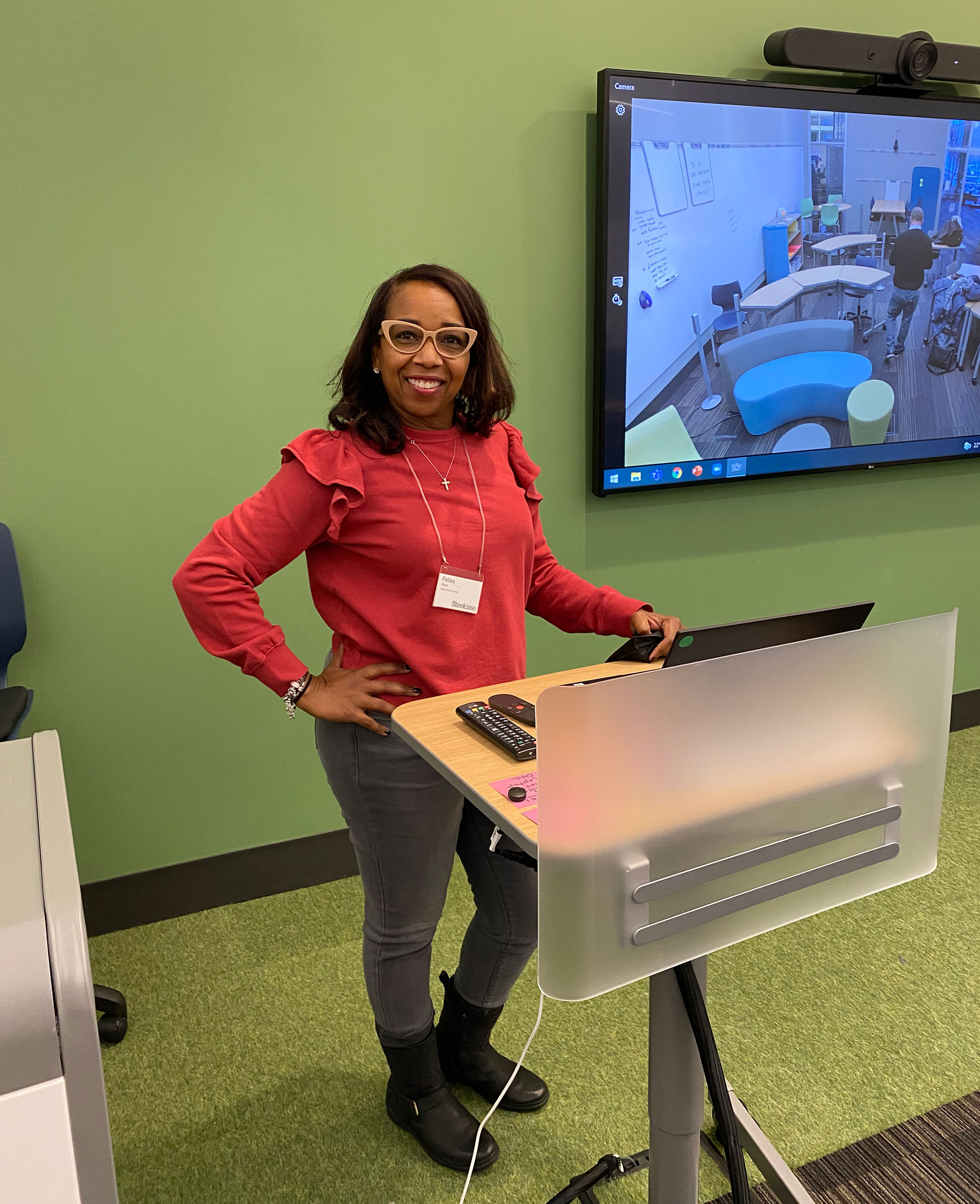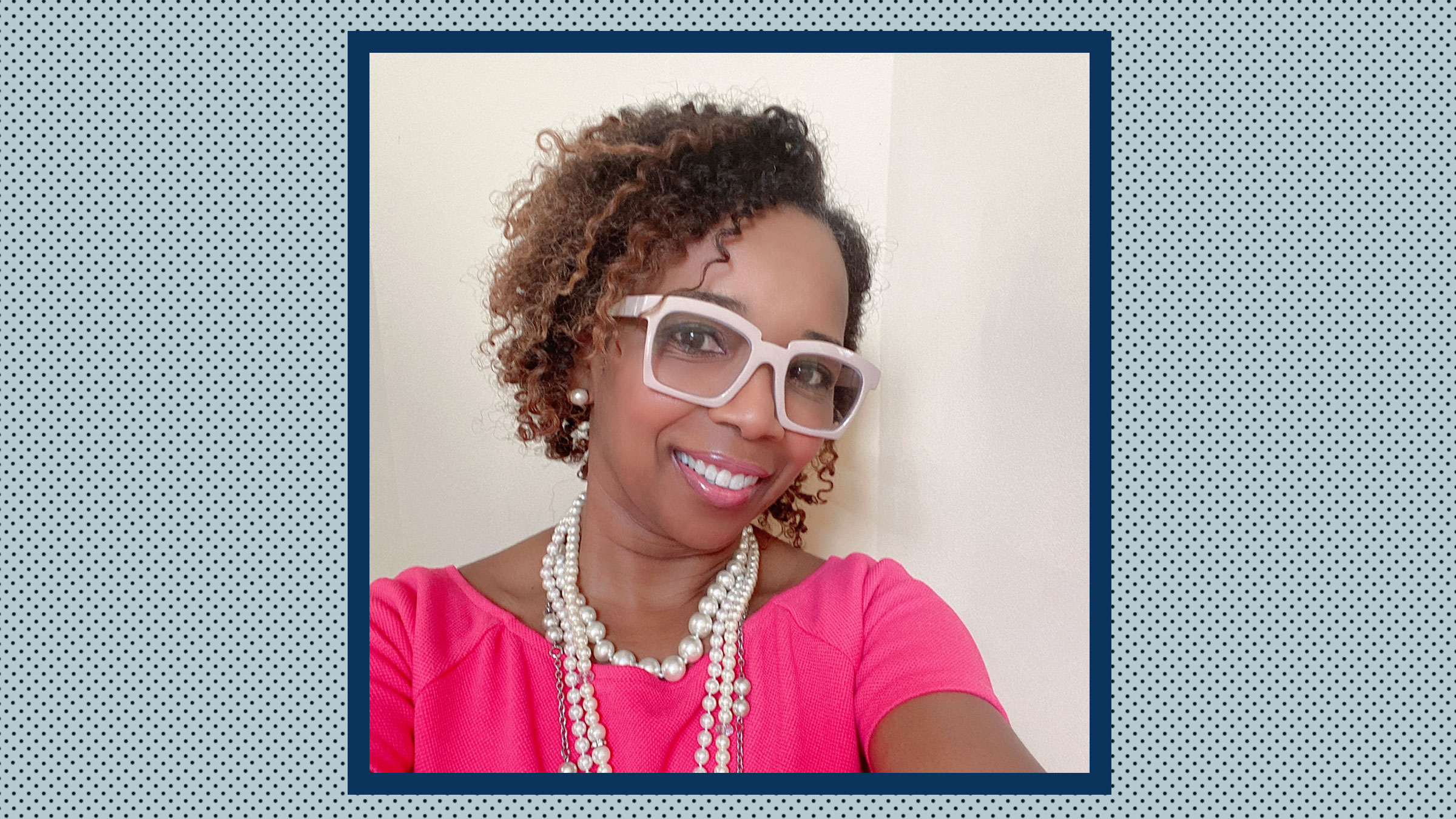Felisa Ford has been a teacher for almost 29 years–she began as a social studies teacher and became a digital learning specialist for the Atlanta public schools in 2015–but she has always been focused on helping kids learn outside the classroom too. “My goal was always to empower students and give students the skills they need to be able to live beyond school,” she says.
When the Black Lives Matter protests began in the summer of 2020, Ford began working on a new way to teach students about social justice movements around the world–through video games. Together with colleagues Natasha Rachell and Ken Shelton, Ford created Good Trouble, a Minecraft world that students can navigate to explore and experience different civil rights movements. In the game, Congressman John Lewis guides students through the Good Trouble world, introducing them to activists such as Malala Yousafzai and Rosa Parks as they take notes on different movements and what they set out to achieve. “It was so important to get these stories across so students could see themselves in the stories that we tried to represent in Minecraft, because if you don’t see it, sometimes you can’t even imagine what you can do,” says Ford.
The game, designed for third graders up to high schoolers, is made up of seven independent lessons in one continuous world. With over 3 million downloads as of May 2021, Good Trouble was Minecraft’s most downloaded educational world.
More from TIME
“We just want to make sure that students know that there’s a story that is representative of their community, that we’re all in this community together, and it’s important that all of our stories are told and shared,” says Ford. She spoke with TIME about teaching through technology and what comes next.
What motivated you to create this project?
I [applied and was certified as a Global Minecraft Educator], and I have dabbled with using Minecraft in our district. During the height of the pandemic, after the George Floyd incident, I received an email from Minecraft, wanting to know if I could create some content around the Black Lives Matter movement.
It was so raw at that moment because it truly had just happened maybe a week or two before, and Minecraft was looking for a way to reach students to help them understand, but also support teachers with teaching this content. The emotions were raw for everyone, and oftentimes no one wants to tackle this subject in the classrooms because it can be polarizing. It was important for me, as a mother of a Black son in the United States, to try. I knew that this was something that had to be done. Our hearts were so heavy, and we struggled with how to tell this story, how to reach kids. And Minecraft was a way that it could be done and be received.
The Minecraft team worked with the creative of the world, because we had a vision of what we wanted it to look like. We didn’t want it to just be about the Black Lives Matter movement. We knew was so much bigger than Black Lives Matter and it was so much bigger than the George Floyd incident.

How did the name Good Trouble come about?
I live in Atlanta, Georgia. Congressman John Lewis [served] the district that I live in. He had just recently passed as well, and we thought it would be a good way to honor him, and also pay respect to people since the beginning who have gotten into good trouble.
How did you decide on which activists and movements you wanted to include?
We wanted it to be a global representation, not just this one moment in time. It was really important for us to highlight different advocates from across the world. We have the scene of Congressman John Lewis walking on Black Lives Matter Plaza in Minecraft, but students get to meet other activists like Malala in Pakistan standing up for the rights of girls education, or Nelson Mandela in South Africa standing up against apartheid. They get to meet Gandhi fighting for India’s independence. Dr. King, Rosa Parks. We have a world on the U.S. Civil Rights Movement. We take them to Britain [to see] Emmeline Pankhurst fighting for women’s right to vote– though we made it clear which women they were fighting for at that time.
Oftentimes you don’t see people of color represented in some of these games. It was important for us to tell these stories of people who have contributed to society so that students can know not only if it’s for your community or my community, all stories are worth telling and should be told.
What do these lessons look like in a classroom?
There are 7 independent lessons within this one world. Classroom discussions were built into these lessons. We created the lessons using newspaper articles, videos from the Smithsonian Institute, and other historical documents. We’ve set the lessons up so a teacher could pre-teach the content prior to the students going into the world because we don’t want the students to just go into Minecraft without any background knowledge of what these lessons were about.
Then after they were in Minecraft, we have different activities for them to do. They take screenshots while they’re in Minecraft, and they write a reflection on what happened, and how we could apply it to wherever they’re living in the world. We encourage students to continue to do research and to continue having those conversations.
Teaching these social equity and justice lessons can be difficult for teachers, especially if they’re in an area where they don’t have students that look like me or may be in a different minority group. We gave them vocabulary words. We wanted to make use of all the resources that they need.
Why was it important to create these lessons on a video game platform?
My goal is to give educators the technology and the content, skills, comfort level, whatever they need to be successful in the classroom. When COVID hit, that was extremely important that we were able to lean into not only our teachers but our students as well so that everyone could be successful in a fully online platform.
And my other goal is always to empower students. We wanted students to be able to experience this in a game-based platform so that they’re learning while they’re playing. In the Nelson Mandela world, we have the purple trees that you will see in South Africa. In the Malala world, students helped to build a school that had been destroyed by the Taliban. We really try to make it real-world applicable so students can understand–and we have content and articles that they can reach to and learn more.
What has been the response to the project?
The response has been overwhelming. There was a video that the Minecraft team shared with us where they did a full day session with teachers in Pakistan using the Malala lessons. They just were amazed and went on about how they’re still fighting for it and how these lessons help tell the story. And to see the impact of what you’ve created on not only educators in your country, but educators around the world, which is what we hoped it would do, speaks volumes that there definitely was a need for this content and that educators are embracing the good trouble.
The Minecraft team said it’s been the most downloaded world in the history of the Minecraft education site. That let us know that there was definitely a void for this type of content and there was a need for this type of attention.
What do you hope students gain from these lessons?
Our hope was that students would be able to open their minds and gain empathy and understanding for others. If you have a friend that is being mistreated, it’s okay to stand up for that friend. We tried to bring that lesson into the Minecraft world so that they can see how these activists stood up for others. We hope that students gain that lesson that you can stand up for someone in so many different ways. We wanted them to see that these were ordinary people who did extraordinary things. They weren’t well known when they started their journey but they felt a need and they did.
- Donald Trump Is TIME's 2024 Person of the Year
- Why We Chose Trump as Person of the Year
- Is Intermittent Fasting Good or Bad for You?
- The 100 Must-Read Books of 2024
- The 20 Best Christmas TV Episodes
- Column: If Optimism Feels Ridiculous Now, Try Hope
- The Future of Climate Action Is Trade Policy
- Merle Bombardieri Is Helping People Make the Baby Decision
